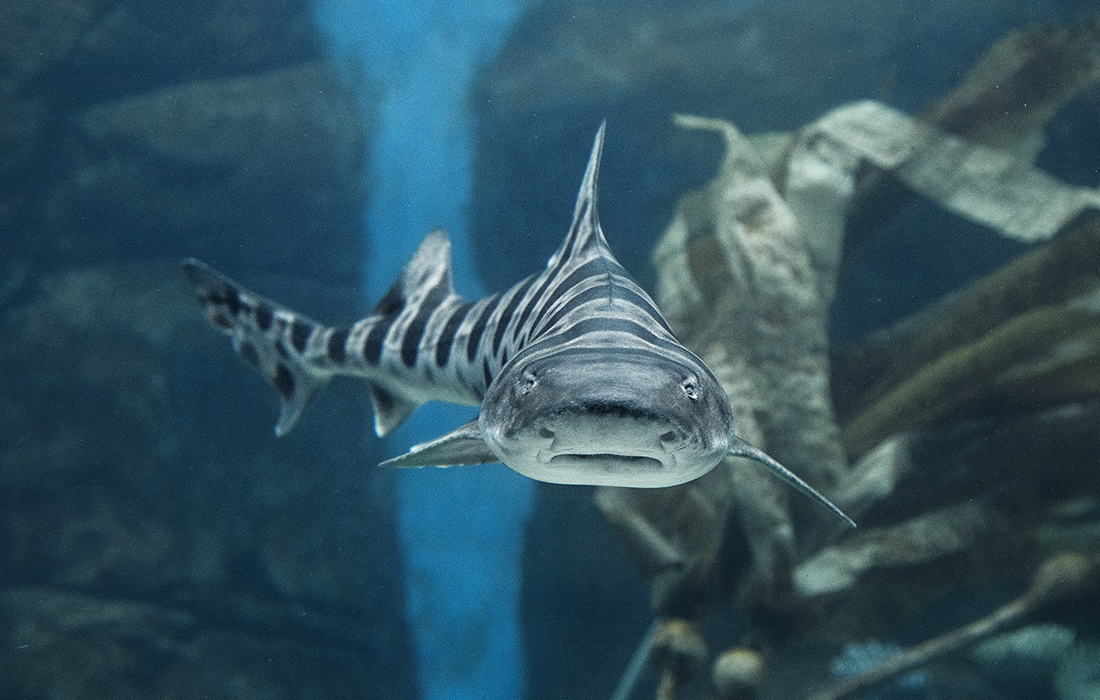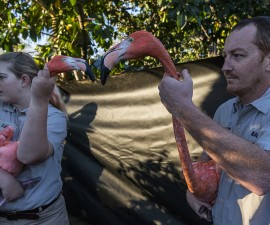BY Wendy Perkins
Photography by Ken Bohn
In the underwater “song” of the Cape Fynbos habitat at Conrad Prebys Africa Rocks, penguins provide the peppy rhythm while the sleek leopard sharks lay down the smooth bass line. With strong tails smoothly sweeping side to side, dappled leopard sharks glide through the water, surprising and delighting all who watch them.
Sharks and Penguins?
One of the most common questions asked—or overheard—at the Cape Fynbos exhibit is “won’t the sharks hurt the birds?” Those who watch for even a few minutes (either at the exhibit or on Penguin Cam) soon get their answer: nope. Key among the many reasons is that leopard sharks Triakis semifasciata are not aggressive, large-prey hunters. No need to fear the leopard sharks—unless you’re a clam or other bottom-dwelling item on their menu. Yet, the species has some interesting adaptations, curious behaviors, and an unexpected way of reproducing that is fascinating to many people.
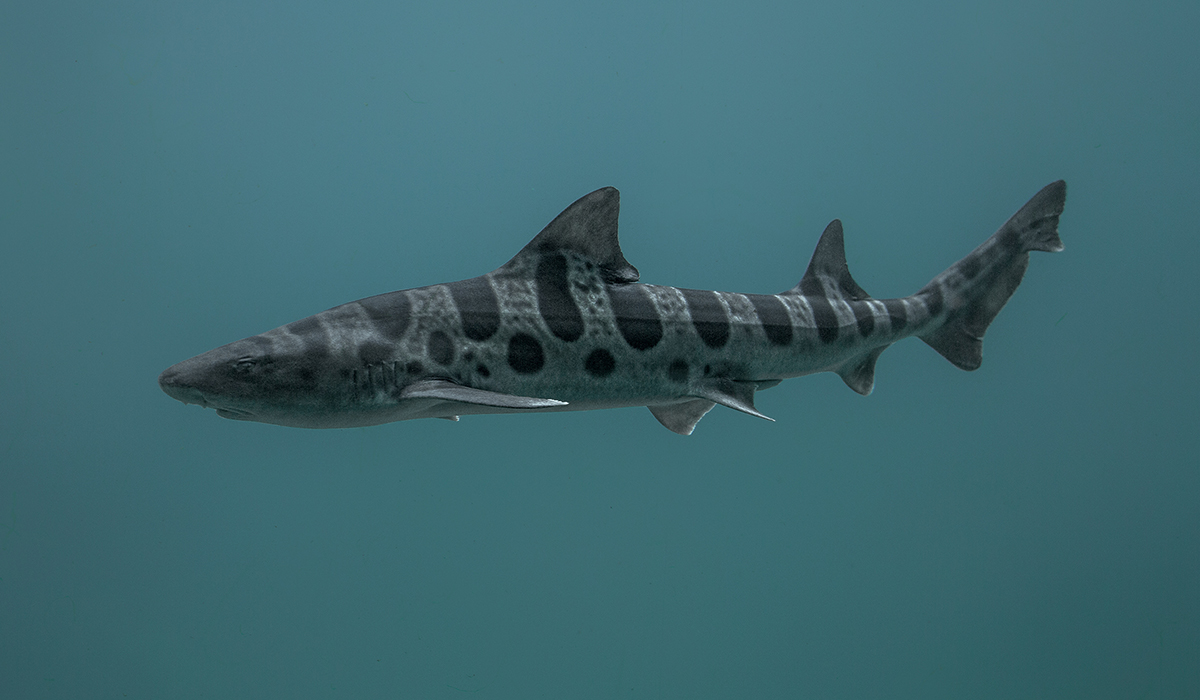
SMOOTH MOVES
Balanced by eight perfectly placed fins, leopard sharks glide through the sea with the greatest of ease.
Banded Beauties
Native only to the waters of the Eastern Pacific, leopard sharks are found near shore from Mazatlan, Mexico to Oregon. In South Africa, penguins share habitat with a similar small shark, the gully shark Triakis megalopterus. Having a Pacific Ocean species fill in for the African species in our exhibit gives us a chance to proudly highlight our local wildlife, while demonstrating the relationship between the species.
The leopard shark is a slow-growing species that can take 10 years to reach maturity. Full-grown females can reach seven feet in length, while males are slightly smaller. The dark splotches across the back earn them their common name of leopard shark, and the species portion of their scientific name semifasciata means “half banded.” The genus name Triakis points to the feature most people think of in regard to sharks: the teeth.
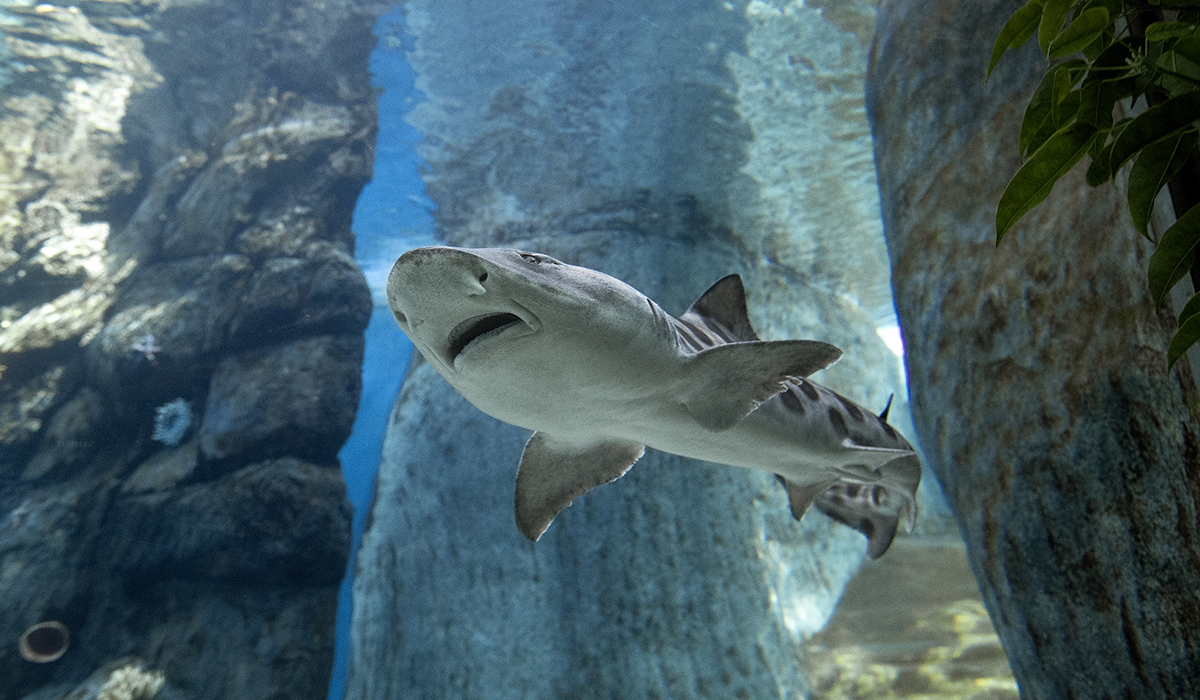
THE RIGHT BITE
Leopard sharks have a relatively smaller mouth than the gaping maw of many of their relatives. Yet the size and placement are perfect tools in the right place for feeding on bottom creatures. The “dots” above the mouth are sensitive pores that hone in on electrical energy.
Toothy Truth
Derived from Greek, Triakis means “three pointed,” describing this species’ teeth. However, a look inside a leopard shark’s mouth would reveal something different from what many people imagine shark teeth to look like. Rather than poking straight up and down, the teeth overlap, forming a ridged, flattened surface. It’s an arrangement known as “pavement-toothed.” While the sharp points can penetrate skin, the arrangement best serves as a way to grip on prey as the shark gets ready to swallow—leopard sharks tend to suck food into the mouth rather than grab with a bite.
Although you may see the sharks cruising on the surface or at any depth below, they are most commonly observed on the bottom. It’s their natural tendency! Open-ocean and fast-swimming sharks have crisp, bi-lobed tails for maximum swimming power. Leopard sharks, on the other hand, have a tapered tail adapted for bottom feeding.
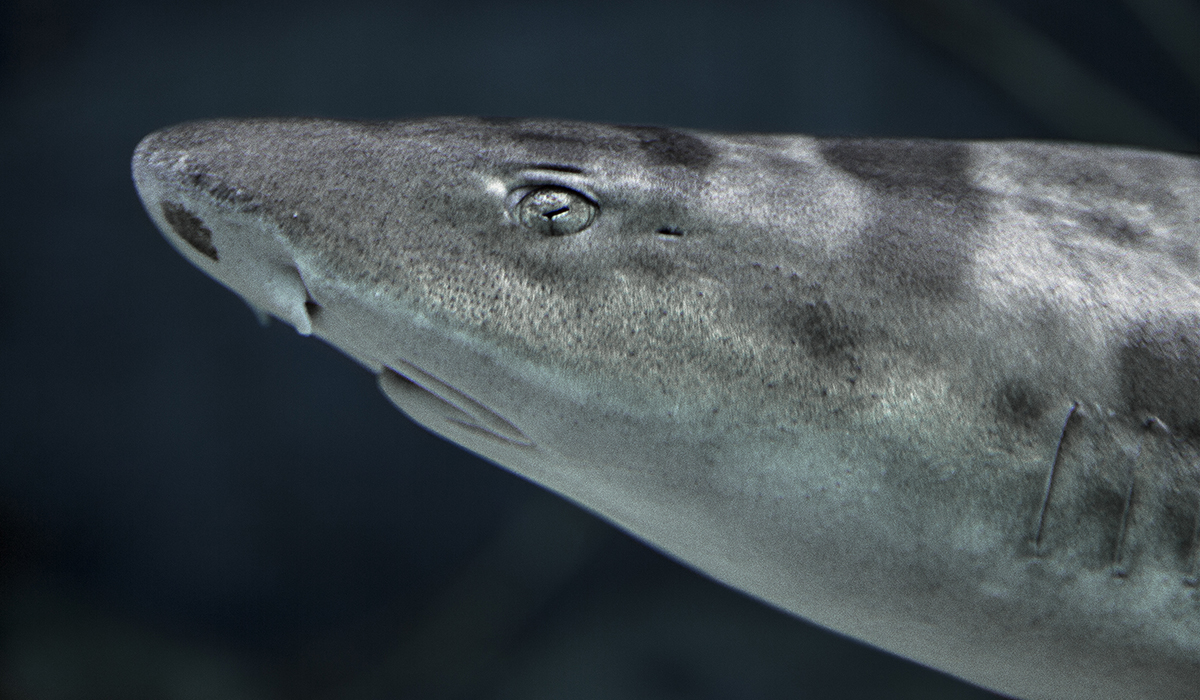
HEAD GEAR
Small bits of flesh hanging at the nostrils offer tactile aid in finding food on the bottom. The small opening behind the eye is a secondary way of drawing water into the gills, called a spiracle. Not all sharks have spiracles, but it is a great adaptation for bottom feeders like leopard sharks; it allows the fish to “breathe” even with its mouth against the sand or mud.
A Sixth Sense
In their natural habitat of shallow bays, mud flats, and sandy bottoms near shore, these sharks skim above the sandy or muddy bottom in search of clams, crabs, fish eggs, fat innkeeper worms, rays, ocotopods, and fish. At the Zoo, they are fed capelin, whitebait, squid, shrimp, and some herring. When your food is buried under the sand or tucked in a crevice, you need more than vision to locate it. And leopard sharks have tools to meet that challenge.
A shark’s acute sense of smell is a well-known phenomenon, but they have another sense that draws them to their prey, too. On the underside of a shark’s snout are numerous pores filled with a jelly-like substance. Called ampullae of Lorenzini (named in honor of the scientist who first described them in the 1600s), the openings pick up electric fields. Nerves connected to the ampullae carry weak electrical signals to the shark’s brain. Living things give off electric signals, and the ability to detect them helps the leopard shark locate prey even when it’s hiding under the sand.
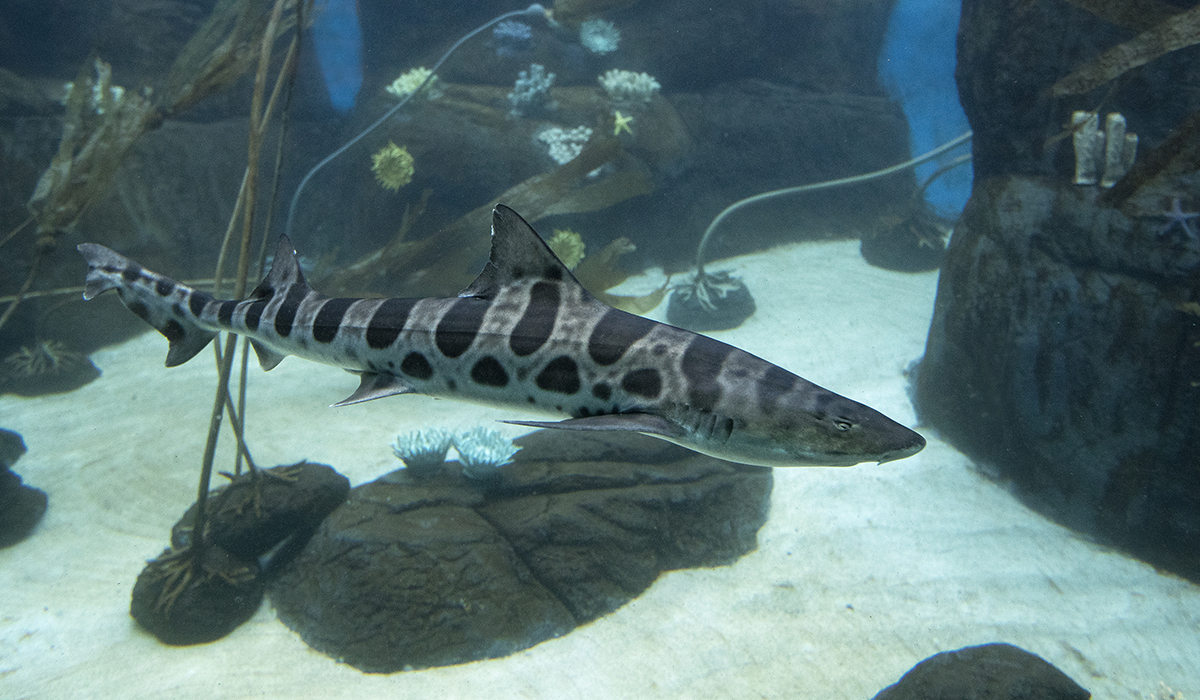
SAN DIEGO LOCALS
Each summer, hundreds of female leopard sharks gather near shore at La Jolla, California, just a few miles from the San Diego Zoo. They ignore the throngs of humans in the water, simply swimming according to their needs. Recent research suggests that they are pregnant females making use of the warmer water to help incubate their young, and that they tend to return to the same location each year. Other aggregations occur in small bays and inlets along the coast of California and Oregon.
Inside Job
Some shark species lay eggs enclosed in a rubbery, protective case, while others give birth to live young. Leopard sharks take the latter approach, but with a twist. While some live-bearing sharks nourish their unborn young from their own bodies, female leopard sharks (and others) basically hold the eggs within the body during gestation. The developing “pups” get all their nutrition from a yolk sac, which is formed even before an egg is fertilized. This reproductive stragegy is called ovovivipary After a 10- to 12-month gestation, the pups hatch within the female, are expelled, and swim off, fending for themselves from that point on. A single female can produce anywhere from 4 to 29 pups per litter!
We’re not expecting the swish-swash of tiny leopard shark pup tails; we only have males at this time. They add an extra bite of wonder to the pool, and are mesmerizing to watch. Check them out in person, or on Penguin Cam!

